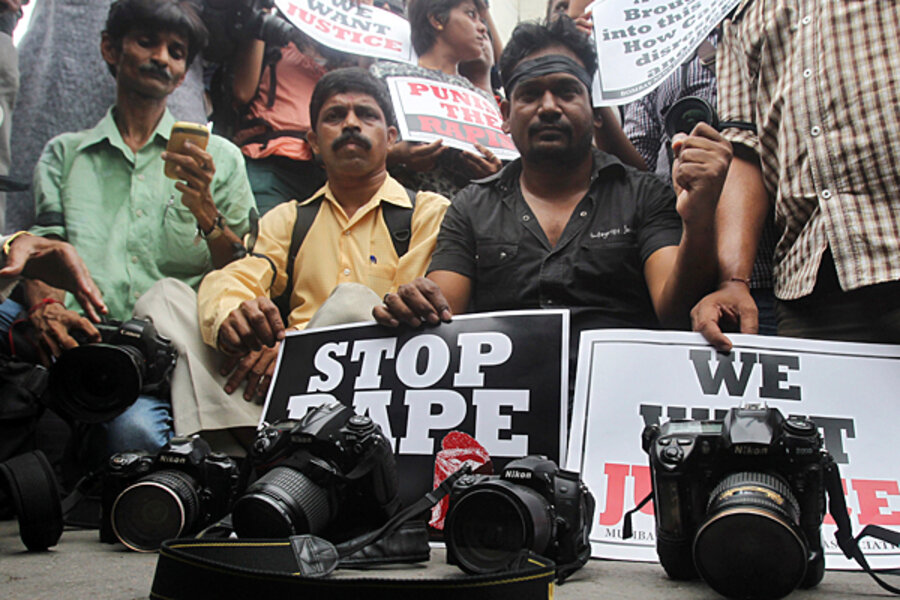India gang-rape deepens concerns over women's safety
Loading...
A young photojournalist was gang-raped in Mumbai on Friday, prompting protests and outrage after a series of high-profile rapes has put threats to women’s safety in the spotlight this year.
The latest attack has especially rocked Mumbai, India’s most populous city, which has a reputation as a place where women can travel much more safely than in New Delhi. The young journalist’s rape has been eliciting comparison to the gang-rape last December of a 23-year-old student on a moving bus that became the catalyst for nationwide protests. She and her male friend were beaten and left for dead on a road near Delhi. The woman later died, and public outcry led to legal changes, including the ability to expedite rape cases and tougher punishment for sexual violence.
The news came as a blow to what progress has been made, and speaks to how far India has yet to go on creating a safe place for women, many say.
“Sad validation of the fact that NO city in India is safe for women,” tweeted actress Gul Panag, a former Miss India. Another blogger known as Samar Khan tweeted 'The safest city in the country for women' ... This badge of honour has been stripped from Mumbai.”
The woman, an intern at an English-language magazine, was on assignment with a 20-something male companion, taking photographs of an old mill building, Mumbai Police Chief Satyapal Singh said at a news conference Friday. The man was tied up and the journalist – who cannot be named according to Indian law – was gang-raped.
She was admitted to a hospital on Thursday night and is in serious but stable condition, and is able to talk, according to the hospital. The Mumbai Police say they have arrested one suspect and are still looking for four other suspects, reports Reuters.
There were 233 rapes reported in 2012, according to the National Crime Records Bureau.
Recorded crimes against women have risen in recent decades, according to Monitor correspondent Vaishnavi Chandrashekhar, writing after the rape in December: “Rapes have doubled since 1991, with police registering 24,206 cases in 2011. Dowry-related deaths (women killed for bringing inadequate dowries to their husbands' families) and molestation have also increased, with almost 43,000 cases of molestation registered in 2011.”
The increase may be due to improved documentation, reports the Monitor, but sexual crimes are also vastly underreported in India. (The United States recorded 80,000 rapes in 2008.)
There have been a number of rape cases reported this year, including some high profile rapes of tourists and young children.
A travel industry survey found that the number of foreign female tourists coming to India during the first three months of 2013 fell by 35 percent after the December rape, reports the Los Angeles Times.
About a thousand people gathered Friday evening in Mumbai to protest the gang-rape. Some wore black armbands, while others carried placards reading "Stop rape" and "City of shame," reported The Associated Press.








